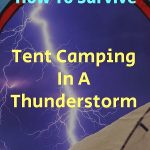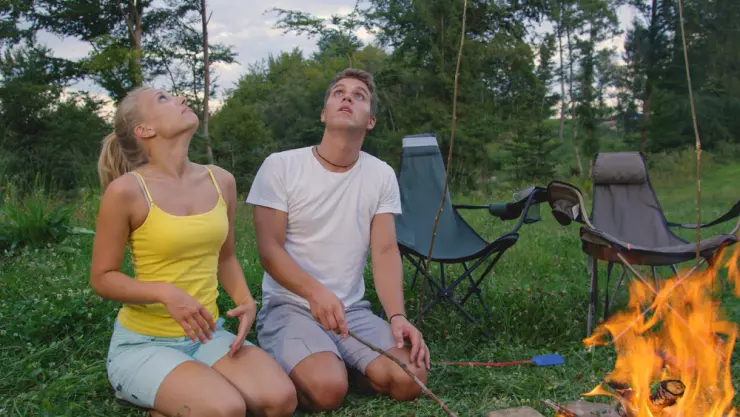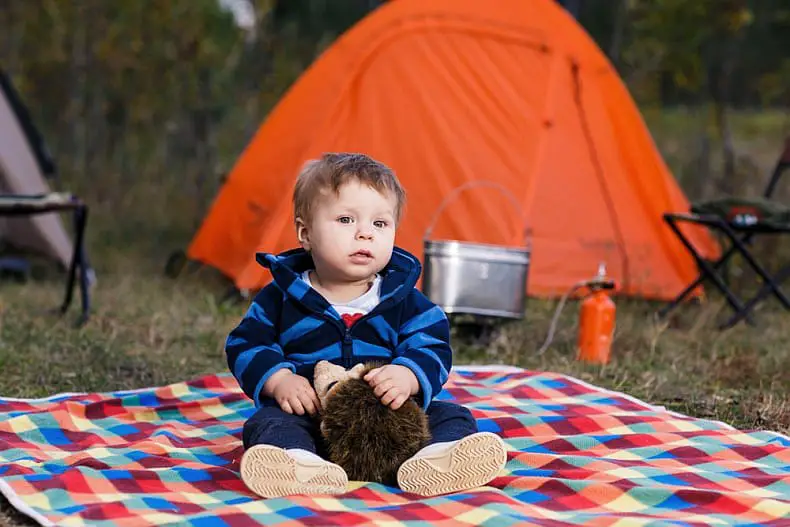Knowing how to survive difficult conditions can be pretty crucial. While some conditions are not that big of a deal, others can be. Yet even some lighter stuff can become pretty problematic almost instantly. Thunderstorms can be among them, so knowing how to survive tent camping in a thunderstorm is crucial to learn.
Storms can come with rain and lightning, which in turn can create several issues. Lightning can strike at any point, anywhere. Meanwhile, rain can come with its own list of issues. It can collect in specific areas causing rockslides, mudslides, and obviously flooding.
People who spent time in the Amazon Rainforest will tell you that the rainy season there brings water levels up to ten sometimes twenty feet in some places. When water levels rise in some areas, that can lead to encounters with dangerous animals you would otherwise avoid on land.
Of course, it depends on where you are. However, alligators and crocodiles can be found both on land and in the water. They are most comfortable in places where they could have a little of both. If you’re anywhere near one of those places, things can become problematic.
Plus, you have to consider how the conditions will affect your mobility. Can you move faster through a place or will you need to take your time to avoid injuring yourself? Will the rain cause you to be too cold, resulting in hypothermia? Clearly, problems are all around.
To help you avoid these issues, we’re going to give you some tips on how you can properly survive tent camping in a thunderstorm. Let’s get started!
Table of Contents
Know Your Conditions Before Arrival

If you know before arrival that you’re going to likely see a storm, it might be best just to stay home. If you insist on still camping, then you need to be aware of how long the storm or storms will be in your camping area. You will also need to properly prepare for this.
That means preparing for the prospect that rain will be present. Therefore, you will need to make sure to camp somewhere that storms won’t cause you as many issues or any at all. Of course, you’ll also want to have a tent that is waterproof…not just water-resistant.
Water-resistant tents, while fine, are only able to handle so much water. This is especially true for how it gathers on top of your tent (depending on how it’s made). When you use a waterproof tent, fewer problems come about.
Be sure to pack the type of clothing that will do well in rain too. That especially includes using proper footwear, such as the type that has good gripping. Those you might go climbing in would work best.
Consider The Camping Spot
You may not know if a thunderstorm will come. Sometimes there is a 10% chance of rain and it rains all day on you. Then it’s 100% and it rains for 5 minutes. This can be a bit annoying, so we can easily see why some people do not change plans in spite of knowing rain will come.
Yet if you don’t know, you can still keep an eye on the weather. If you see one coming, be sure to switch your camping spot. The best place to be is away from hills or areas where rocks could easily fall. You want to be on a flat surface that is not immediately close to water.
Sometimes being under a group of trees can be useful. While there is still the possibility that lightning could strike here…it’s an incredibly low chance. Trees will offer some added covering, which can help a lot.
You can also build added covering with sticks and leaves you can likely collect from the forest floor. But let’s pretend you’re not able to get covering over you and there is a solid possibility that water could add up in your area….
Dig, Dig For Your Life

While digging randomly won’t be useful to you, this will be quite helpful if you’re trying to avoid possible flooding. The best thing to do is dig what amounts to a large moat around your camping area. You can dig it as deep as you’d like, but about 1 to 2 feet is more than enough to survive one storm.
You want to also try and offer an exit for the water that is collecting in the moat too. Let’s say you’re on a flat surface but there is a hill about 10 to 20 yards away. Simply dig a passageway for collecting water to go. Essentially, you’ll be digging something that should be about 5 to 8 inches deep.
Once the water in your makeshift moat rises, it’ll begin to get into your campsite. But if the line you created does its job, the collecting water will run into the line you created and begin to exit out down the hill. Now, you’re avoiding the biggest issue.
Not to mention, if you need the rainwater due to being out of drinking water…you’ll have a solid collecting area for it. You could even have your exit hole dug about 3 to 4 feet and about 1 to 2 feet wide to collect too. It’s really up to you.
Stay Warm
It might be easier said than done, but staying warm in a thunderstorm can be important. If you’re able to get coverage out of the rain, you can still have hypothermia if you do not find a way to dry off from the rain. The best thing you can do is get a fire going.
Let’s say, however, that you cannot do this. As long as you brought other clothes, you can always take the wet ones off and put the dry ones on. Yet if you did not pack more clothes, you still need to warm up.
If you’re with a friend, skin to skin contact can be helpful. While it might be a bit awkward for you, it is best to snuggle up with them. You can either get shirtless and come together under your combined layers. Or you can snuggle up with both your layers on.
The former is actually better for you, as it’s the fastest way to get warm and stay warm. Your friend’s body temp will be around 98 degrees. He or she is a human, keep in mind. Thus, they will warm you up pretty fast.
If you do not have a fire, then drying your clothes can be pretty hard to do. The best thing to do is to ring them out, getting as much water off as you can. Then hang them up or lay them out flat somewhere in the tent or shelter.
Hug A Tree

If you must move around in a thunderstorm (which we do not advise), you’re better off staying away from any place you need to climb. You also should avoid hills, particularly areas where mud has developed or running water is coming down.
This is obvious stuff, but what might not be too obvious is that you may have to go up a hill to get to a better shelter. The best thing to do in this situation is to find paths where many trees are present.
Grab them to help you climb the hill safely. You may also want to put one foot into the mud or ground area. This will hold you a bit as you’re climbing too. That way, the tree won’t have to hold ALL of your weight. Some might not be sturdy.
The Stick Method:
If you do not have a lot of trees in your immediate sightline, you’ll need something to help you as you’re climbing a hill. This is when we recommend getting a walking stick. You can use this as you climb by jamming it into the ground, as well as your feet like earlier.
This will, in effect, help you climb without falling as easily. You can always get multiple sticks to jam into the ground too. Yet you only really need one unless you plan to use the others as extra foot holding spots.
Surviving Tent Camping
Sure, surviving tent camping can be hard at times. You’re not just having to consider the tent. It also involves several other factors that must be considered. Camping in a thunderstorm does not just mean huddling up in a tent and waiting for the rain to stop.
Things like the wind could push the tent over, rain may come through, branches or rocks might jam into the tent. So much could go wrong. You need to be prepared for things before they go down and then know how to handle things on the fly.
We hope some of these concepts will help you if you ever find yourself in a survival situation during a thunderstorm.







